Ackee, the heart of Caribbean cooking, is not just for traditional dishes. Now, it’s the star in vegan kitchens, too! In this post, we share recipes that turn ackee into meals everyone will love. No eggs? No fish? No problem! Our vegan ackee recipes are full of taste and healthy, too.
Imagine starting your day with a plate full of ackee scramble. It looks like eggs, but it’s all plant-based. For lunch, how about ackee ‘no-fish’ cakes? They’re crispy outside, soft inside, and totally vegan. We’ll show you how to pick the best ackee and cook it just right. Plus, we’ve got tips on spices and sides to make your dishes pop.
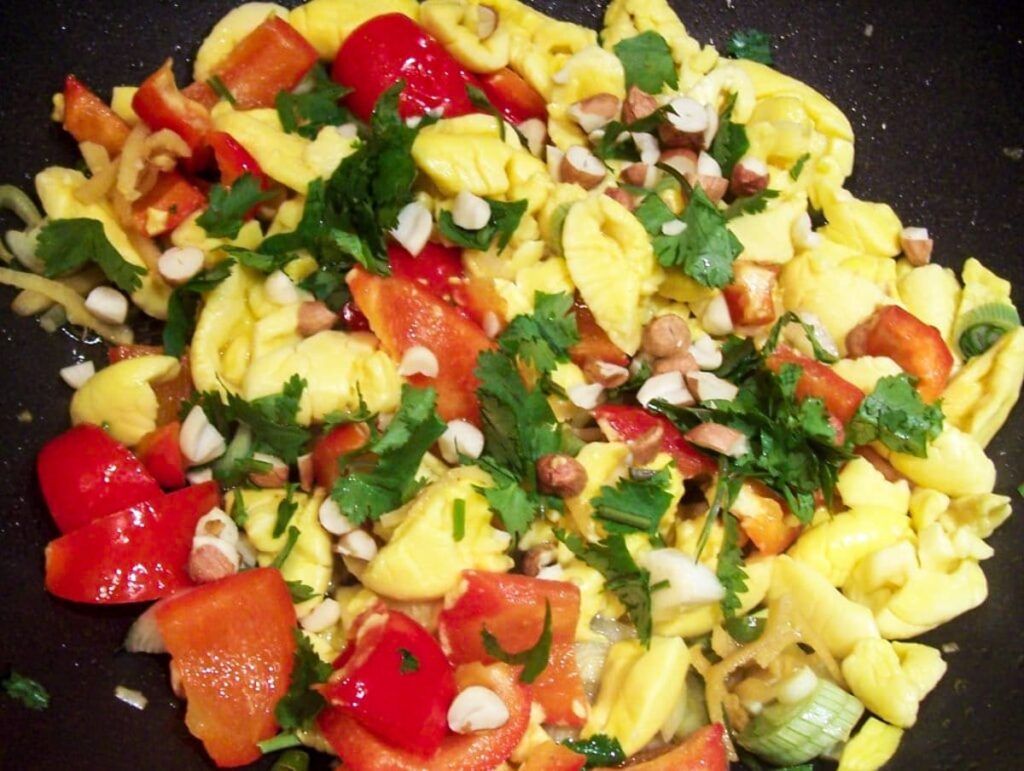
The Star Ingredient: Ackee
Ackee is not just any fruit; it’s a special one that’s loved in the Caribbean. When it’s cooked, it changes from being a fruit to something that feels more like a vegetable. It’s often used in dishes where you might find eggs or meat, making it perfect for vegan meals.
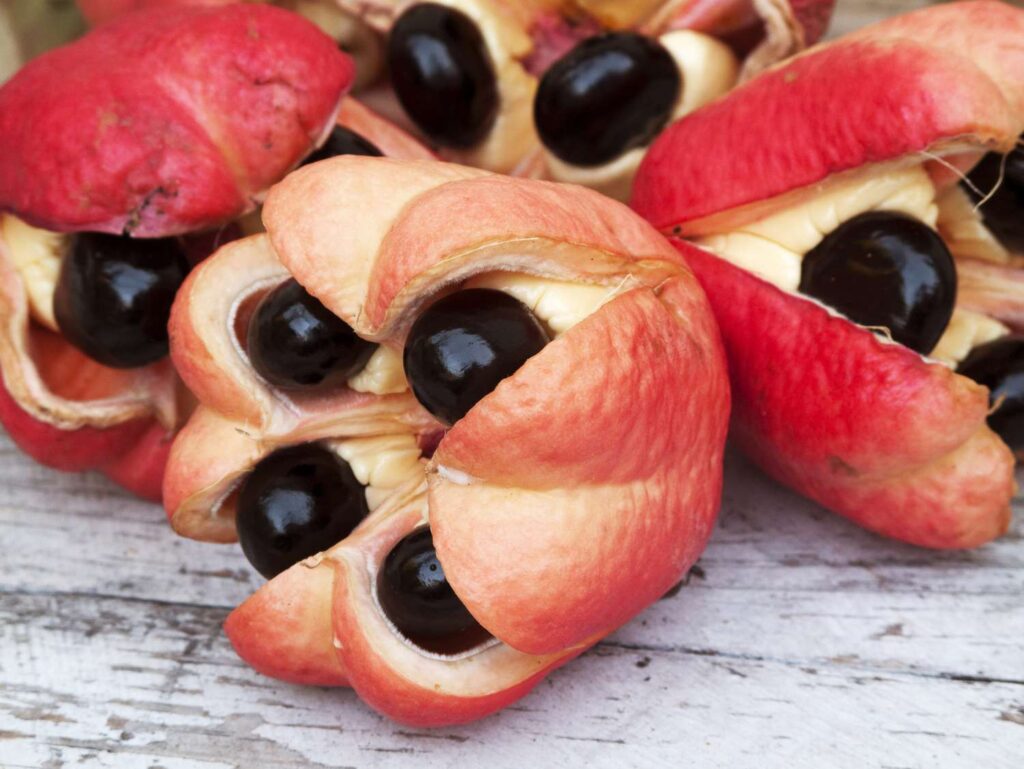
What Does Ackee Look Like?
Ackee looks unique. It’s red and rough on the outside with three big black seeds inside. When it’s ripe and ready to eat, it opens up all by itself. That’s when you know it’s time to cook it.
Why Is Ackee Special?
In many places, people haven’t heard of ackee. But in the Caribbean, it’s a big deal. It’s even the national fruit of Jamaica! People there have been eating it for a long time, and now others are starting to enjoy it, too.

Health Benefits
Ackee is good for you. It has lots of vitamins and fiber. It doesn’t have much fat, which makes it great for keeping your heart healthy. Plus, it’s full of energy to keep you going.
Vegan Cooking with Ackee
For vegans, ackee is a dream come true. It can take the place of eggs in many recipes. When you cook it, it gets soft and creamy. That’s why it’s so good in dishes like scrambles and ‘no-fish’ cakes.
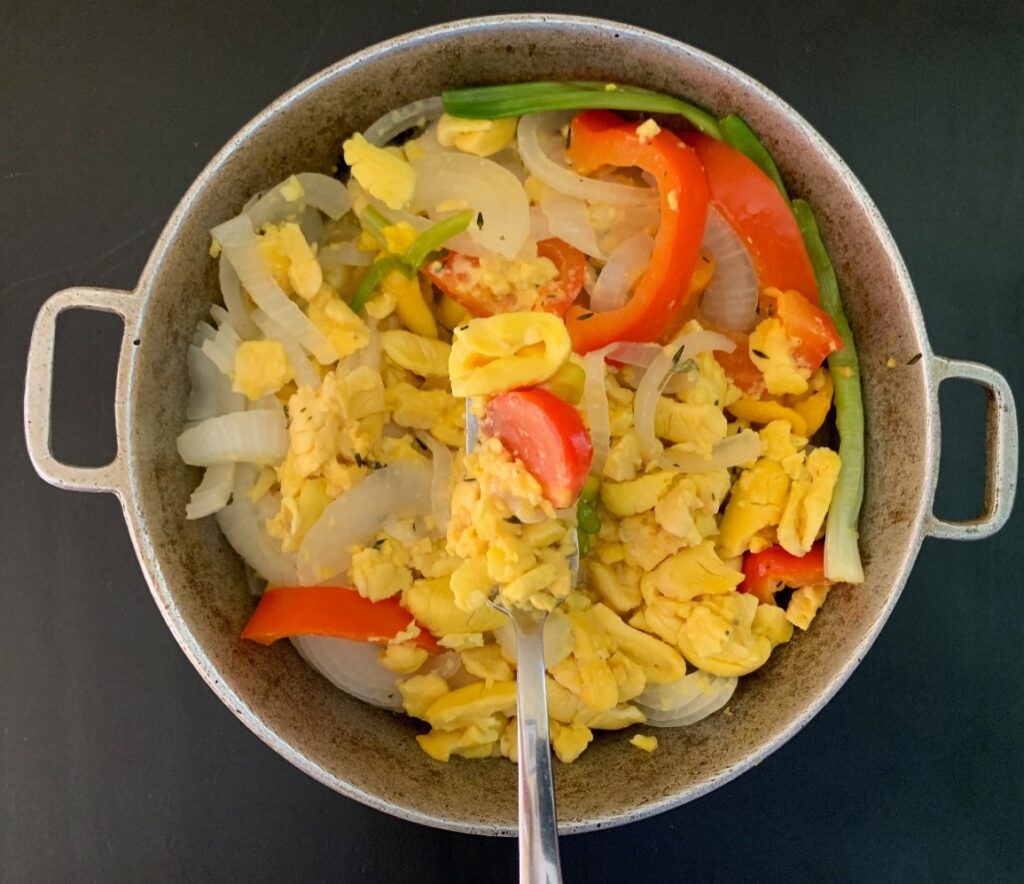
A Note of Caution
You have to be careful with ackee. If it’s not ripe or prepared right, it can make you sick. Always wait for it to open on its own and remove the seeds and the red parts. Only the yellow parts are safe to eat.
Selecting and Preparing Ackee
When you’re ready to cook with ackee, picking the right fruit and getting it ready are key steps. Here’s how to do it just right.
Choosing the Best Ackee
To make sure your vegan dishes taste amazing, start with the best ackee. Look for fruits that have opened naturally. They should be bright yellow and feel firm but not hard. If the ackee is still closed or has any green parts, leave it be. It’s not ready yet.
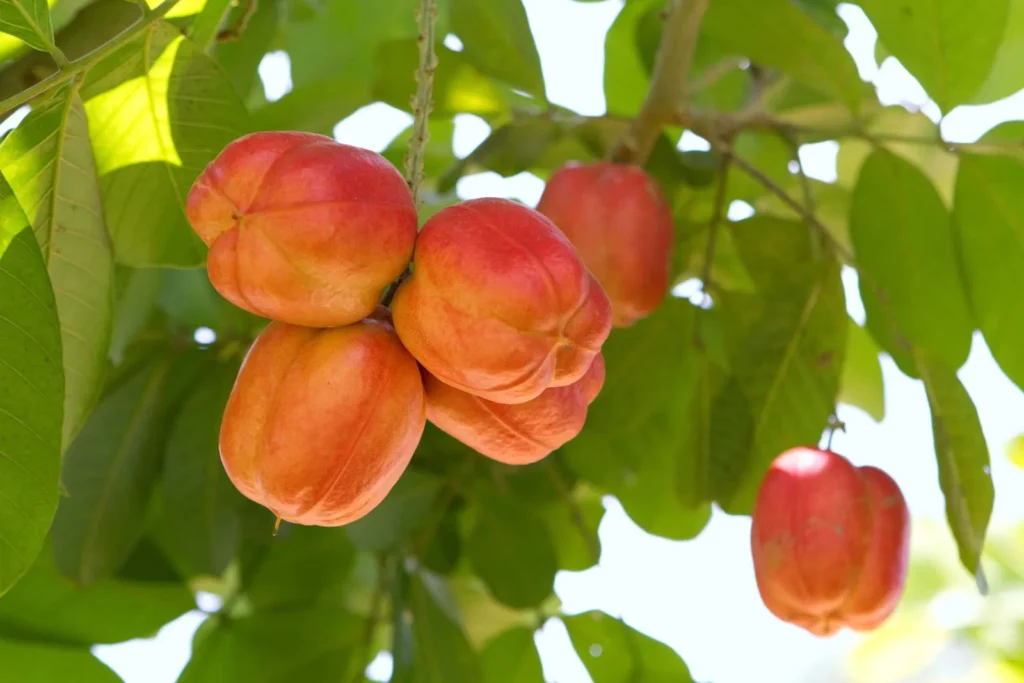
Preparation Essentials
Once you have the perfect ackee, it’s time to get it ready for your vegan recipes. Here’s what you need to do:
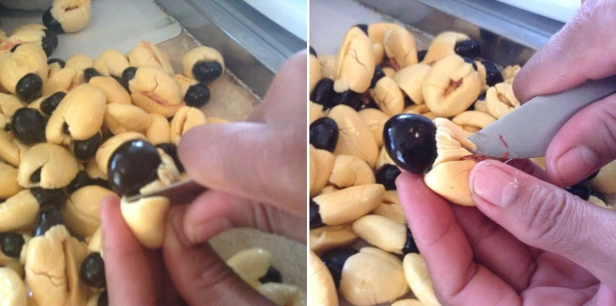
- Safety First: Remember, only the soft, yellow parts of the ackee are safe to eat. Get rid of the black seeds and any red bits.
- Cleaning Up: Rinse the yellow ackee flesh in cool water. This gets rid of anything you don’t want in your food.
- Cooking Right: Boil the ackee in water for about 20 minutes. This makes it soft and ready to use in your recipes.
Ackee Texture Tips
The way ackee feels in your mouth is part of what makes it so good. When you boil it, it should be soft but not mushy. Think of it like cooking pasta – you want it ‘al dente,’ which means it’s just right, not too hard or too soft.
Storing for Later
If you’re not going to use your ackee right away, here’s a tip: after boiling, let it cool down and put it in an airtight container. You can keep it in the fridge for a few days or freeze it for longer.
Vegan Ackee Delights
Ackee isn’t just for traditional Caribbean dishes; it’s also perfect for vegan cooking. Here, we’ll share some delicious ways to enjoy ackee without any animal products.
Ackee Scramble
This dish is a vegan take on scrambled eggs. It’s a popular breakfast in Jamaica, and now you can make it vegan-style.
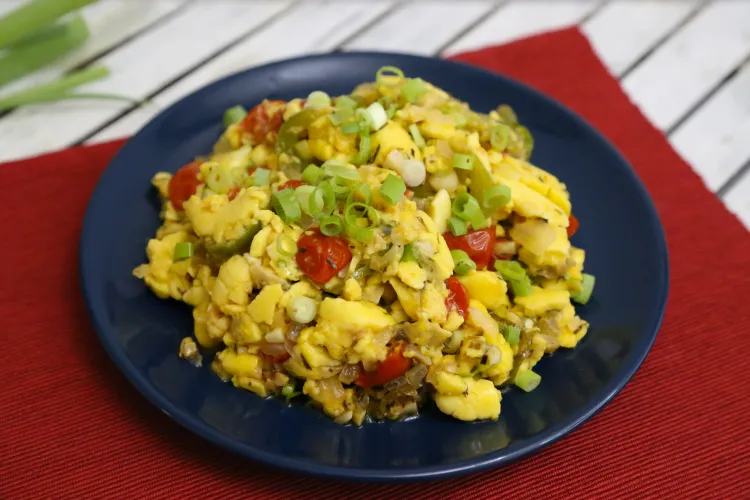
- Ingredients: You’ll need ripe ackee, onions, tomatoes, bell peppers, and spices like turmeric and black salt.
- Cooking Steps:
- Start by sautéing onions and peppers until they’re soft.
- Add tomatoes and cook until they’re just right.
- Mix in the ackee gently; you want it to keep its shape.
- Sprinkle turmeric for color and black salt for that eggy flavor.
- Cook everything together for a few minutes, and it’s ready to serve!
Ackee and ‘No-Fish’ Cakes
These are great for lunch or as a snack. They’re full of flavor and completely plant-based.
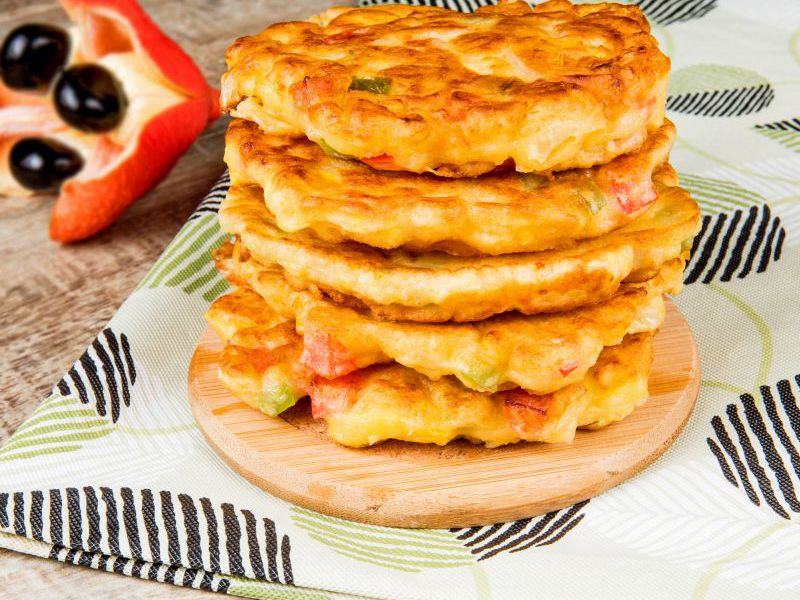
- Ingredients: Get some boiled ackee, breadcrumbs, seaweed flakes, and your favorite herbs.
- Making the Cakes:
- Mash the ackee, but leave some chunks for texture.
- Mix in breadcrumbs, seaweed, and herbs to form a mixture.
- Shape the mixture into small cakes.
- Fry them in a pan until they’re golden and crispy on both sides.
Tips for the Best Flavor
- Spices: Don’t be shy with spices. They make the ackee taste even better.
- Freshness: Use fresh ingredients for the best taste and health benefits.
- Experiment: Try adding different veggies or spices to make these recipes your own.
Flavor Combinations
When you cook with ackee, the right spices and sides can turn a good dish into a great one. Here’s how to make your vegan ackee recipes burst with flavor.
Spices and Herbs
Ackee loves spices and herbs. They bring out its best flavors. Here are some you can try:
- Turmeric: It gives a golden color and a warm taste.
- Black Salt: Also known as kala namak, it adds an eggy flavor.
- Thyme: This herb is a must in Caribbean cooking. It adds a nice touch to ackee.
- Garlic and Onion Powder: These give a savory depth to any ackee dish.
Mix and Match
Don’t be afraid to mix spices and herbs. Sometimes, the best flavors come from trying new combinations. Just start with a little and add more as you go.
Sides and Pairings
Ackee goes well with lots of different foods. Here are some ideas for what to serve with your vegan ackee dishes:
- Rice: Plain or coconut rice makes a simple, tasty side.
- Beans: Red beans or black-eyed peas are traditional and filling.
- Vegetables: Sautéed greens or roasted veggies add color and nutrition.
- Bread: Try ackee with flatbread or roti for a hearty meal.
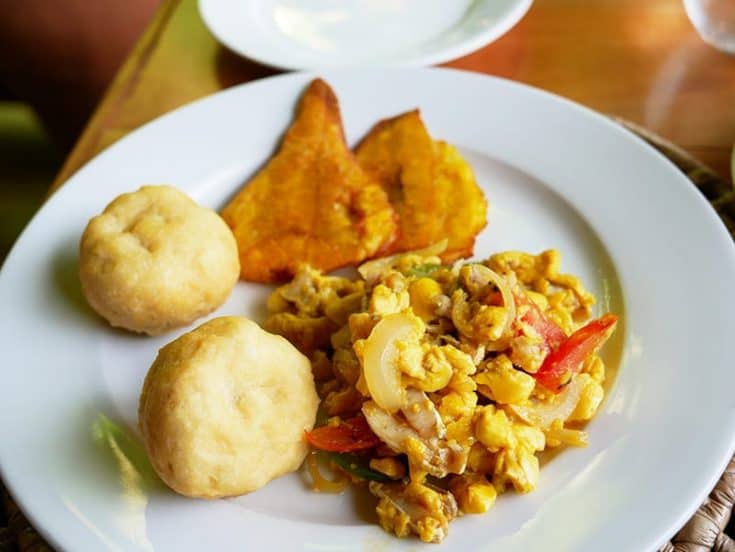
Balancing Flavors
Think about sweet, salty, sour, and spicy. A little bit of each can make your meal perfect. If ackee is the main part of your dish, choose sides that will make it shine.
Cooking Techniques
Cooking ackee the right way is important. It’s not hard, but there are some tricks to make sure it turns out delicious every time.
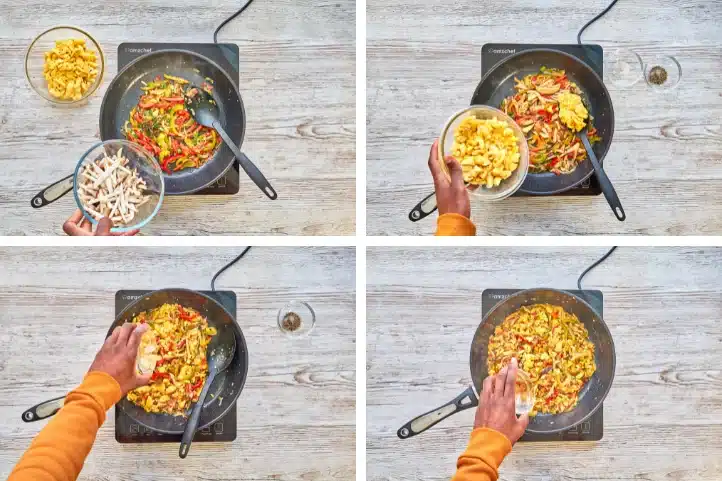
Texture Perfection
The texture of ackee is a big part of what makes it so good. Here’s how to get it just right:
- Boiling: When you boil ackee, watch it closely. You want it to be soft but not falling apart. It usually takes about 20 minutes.
- Frying: If you’re frying ackee, like for ‘no-fish’ cakes, make sure the oil is hot enough. This will give you a crispy outside without being greasy.
Heat Control
The heat you cook with can change the taste of ackee. Here’s what to remember:
- Low and Slow: Some dishes, like ackee scramble, taste better when cooked on low heat. This gives all the flavors time to come together.
- High Heat: For a quick fry, like when making ackee fritters, use high heat. But don’t cook it too long, or it will dry out.
Mixing It Up
When you mix ackee with other ingredients, do it gently. You don’t want to break it up too much. Use a folding motion to keep the pieces whole.
Cooking Ahead
Ackee can be cooked ahead of time. Just boil it, let it cool, and then store it in the fridge. When you’re ready to eat, you can warm it up or add it to your recipe.
Final Analysis
Ackee, with its versatile nature and health benefits, stands out as a star in vegan cuisine. It’s a testament to the creativity and richness of Caribbean food traditions, adapted for a modern, plant-based lifestyle.
So, go ahead, give these recipes a try, and let the taste of ackee surprise and delight you and your loved ones. Remember, cooking is an adventure. Each dish you create with ackee is an opportunity to experiment with flavors and make something new.
So, keep your spices handy, your veggies fresh, and your mind open to the endless possibilities that ackee has to offer.
Disclosure: Our blog contains affiliate links to products. We may receive a commission for purchases made through these links. However, this does not impact our reviews and comparisons. We try our best to keep things fair and balanced, in order to help you make the best choice for you.



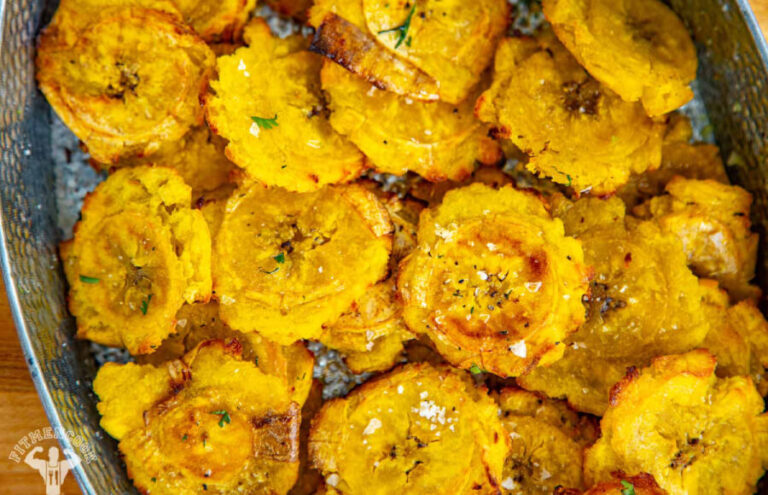

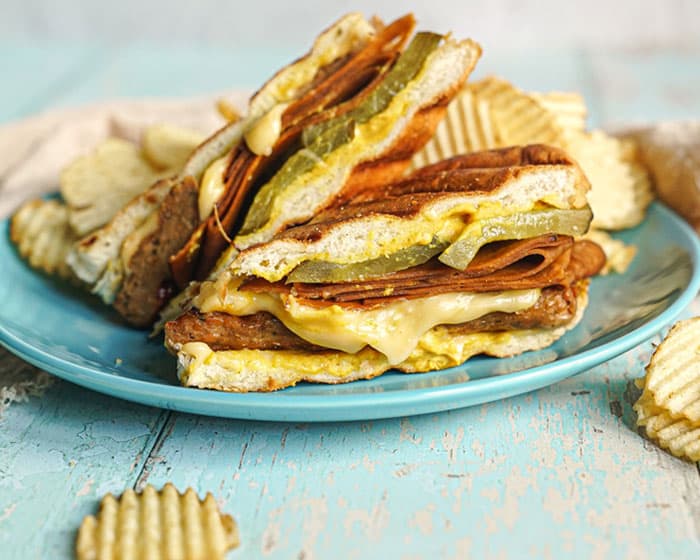


One Comment